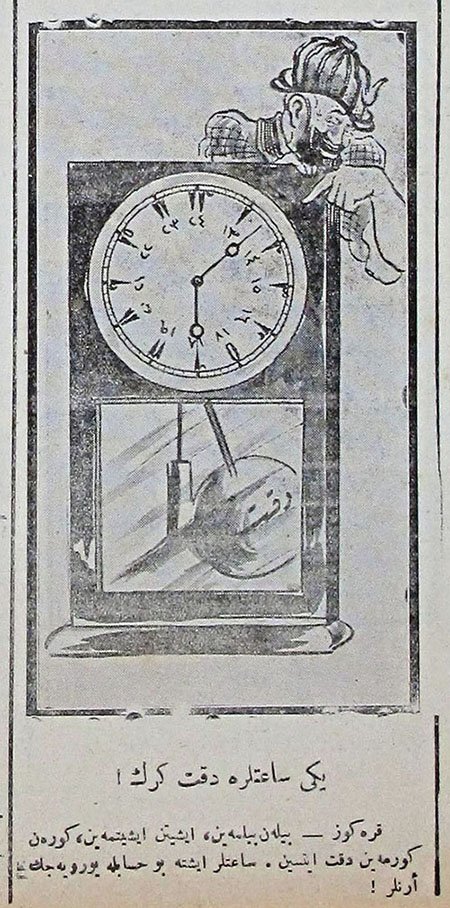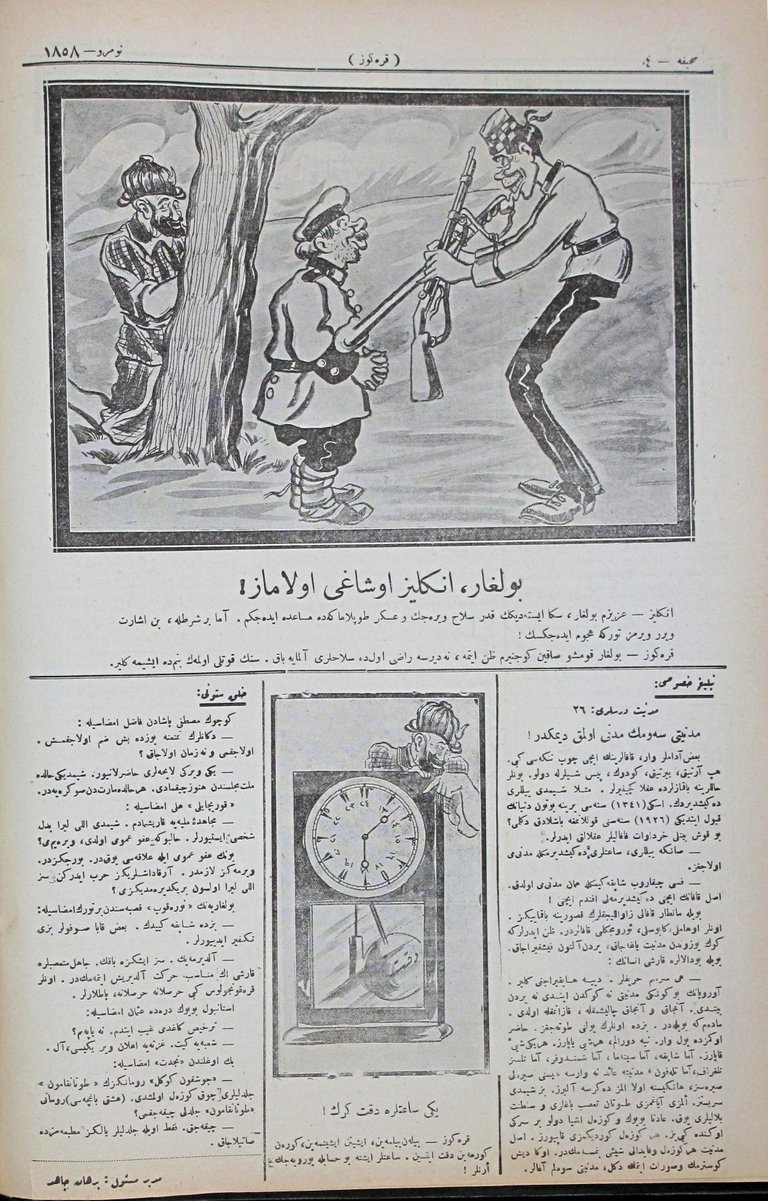
(Illustrated PSA, Karagöz, 6 January 1926, no. 1858, page 4.)
Türkçe
Yeni Saatlere Dikkat Gerek!
Karagöz: Bilen bilmeyen, işiten işitmeyen, gören görmeyen dikkat etsin. Saatler işte bu hesapla yürüyecek erenler!
English
Pay Attention to the New Clocks/Hours!
Karagöz: Hear ye, hear ye! Everyone pay attention! From now on clocks will run according to this calculation, gentlemen!
Comments:
January 1, 1926 brought more that a new year to the young Turkish Republic as from that day onward all measures would become synchronized with those of the West. The first wave of these reforms, referred to as “the change in calendars, time, and measurements” (or takvim, saat, ve ölçülerde değişiklik), was legislated on December 26, 1925 and took effect January 1 (replacing the Rumi and Hijri/Hicri calendars with the Gregorian/Miladi calendar) and January 2 (new time system). Later in 1928 the numbers would change and finally with the change in measurements to follow in 1931. Finally, in 1935 the weekends would shift from Friday to Saturday (afternoon) and Sunday.
The subject of today’s illustration is the change in daily time keeping. Prior to this, an Islamic system of time dictated the temporal divisions of the day, with the first twelve-hour block starting at sunset and the second twelve-hour block beginning at sunrise. For reasons both practical and ideological, this approach was discarded at this time in favor for the less local and more universal, European division of time which placed the start of the new day at midnight regardless of season or geographical location. As part of the modernizing reform agenda of the new Republic, this was meant to synchronize the citizen’s daily life, move away from old, Ottoman/Islamic civilizational codes, and make international engagements more manageable.
Like any reform, swift, wide-scale adoption is key to their success or failure. Thus, journals such as Karagöz took it upon themselves to educate the public about such changes and in this way, support the new regime and state. Here, the text and image work together, not as a mere illustration or even cartoon (as there is no humor in the message), but as a public service announcement to their readers. The illustration is simple and straightforward, featuring a grandfather clock with hours 1-12 and 13-24 clearly marked around the circle. The pendulum below is labeled “vakit/time.” At this point, the mass-synchronicity of time primarily effected public life in the areas of work/school hours and public transportation schedules.
Reference:
Mehmet Bengü Uluengin, “Secularizing Anatolia Tick by Tick: Clock Towers in the Ottoman Empire and the Turkish Republic,” International Journal of Middle East Studies 42 (2010): 17-36.

(Entire page, Karagöz, 6 January 1926, no. 1858, page 4. Hakkı Tarık Us Collection, Beyazıt Library, Istanbul.)
Like what you see? Don’t forget to follow the “Today in 1920s Turkey” Steemit account @yasemin-gencer, or follow me on Twitter to receive notifications for new posts @1920sTurkey.